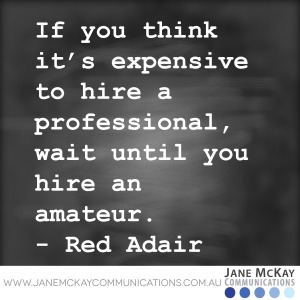 I spend a large amount of my time indulging my inner geek and examining, pondering and questioning the latest marketing, web, search, design and social media trends.
I spend a large amount of my time indulging my inner geek and examining, pondering and questioning the latest marketing, web, search, design and social media trends.
So here you have my top 14 marketing trends for 2014.
Marketing
- Good customer service is, and always will be, your most powerful marketing tool
Word of mouth still remains the most powerful influencer on purchasing decisions made by consumers; be that in person or via the internet, social media or even your local media.
Customer service that goes above and beyond (or is even just plain old basic “good” these days) speaks volumes for your organisation.
- Content marketing
What’s content marketing I hear you ask? At its core, content marketing is creating content that users want or need. It’s not shoving a flyer under their windscreen wiper or spamming their inbox, it’s creating a blog post, an image or a video that users actually want, that they will enjoy and, most importantly, share.
Content marketing has its origins in the need of the customer, it’s about attracting customers, not paying to reach them.
- Video
Despite what you’re thinking, video is cheap and easy to do and it can add another dimension to your content marketing efforts. Video marketing builds brand personality, improves customer engagement and boosts your search engine ranking.
With as little as the camera on your mobile phone you can create, edit and share a video. It doesn’t have to be slick but it does have to be informative.
Video ideas include information highlighting the features and benefits of your latest product, webinars and simple how-tos. With the focus on content and the enhancements of Google’s latest update, videos are amazingly searchable content.
Want to see some of the most successful video marketing? Go to Blendtec’s channel on YouTube.
- Value never goes out of style
Give your customers something in your marketing and I don’t just mean a groovy promotional item.
Whether it’s an informative “how-to” demonstration, a step-by-step tutorial or simply beautiful images that bring people joy; for your audience to be engaged with your brand, they need to perceive value in your marketing offerings. It’s the notion of “what’s in it for me” (WIIFM) marketing.
Web
- Responsive design is the only way
Responsive web design is basically optimising your website to be viewed on all manner of devices and screen sizes: smartphones, tablets, etc.
If your website isn’t responsive, you’re annoying a quarter of your target audience as, globally, 19.1% of all global web usage is now done using a mobile phone while tablet usage is 4.8% and on the rise. Smartphone penetration reached 65 percent in 2013, up from 44 percent in 2011 and is expected to continue climbing in 2014; some analysts predict that reach could be as high as 75 percent by the end of the year.
- Flash is dead, people
Sorry but Steve Jobs killed it.
If you’re not into web development you would still “know” Flash developed sites if you saw them, they were those jaw-droppingly beautiful sites created in the early-mid noughties that had animated home pages and other visual trickery. I loved Flash, I thought it was stunning but also annoying and invasive as it interfered with the native digital experience.
Basically, they’re the reason the “Skip Intro” button was invented.
When Apple made the decision to ship its iPhones without Flash Player in 2010 it sounded the death knell for Flash.
In this world where search engine rankings are critical to getting your business seen Flash is a massive no-no as Flash content cannot be crawled i.e. “seen” by search engine bots.
If your site is Flash-based, you really should look at redeveloping it. Now!
- Visual is king
Sites with crazy mixed-up fonts, mish-mashed, non-intuitive layouts and skewed images make users (especially me) cranky. With larger screens and HTML5, web developers everywhere are developing more and more beautiful sites and if your site isn’t beautiful, your designer isn’t trying hard enough.
Now we’re all a bit more familiar with the interwebs, users are coming to expect stunningly-designed websites.
While it’s not always relevant to create an amazingly-visual site for every brand, it can still be attractive. If you don’t like your site, talk to a designer (and not your friend’s boyfriend who builds sites as a side gig) but an actual website designer.
This doesn’t just apply to websites but all media; advertising, packaging, apps, etc.
Media
- Google+
We resisted, we really did, but as a social network Google+ is simply too important to ignore.
With the added search benefits of being attached to Google, many people will be making the move from Facebook to G+ over the coming years and no doubt members of your target audience will be amongst those making the migration. This ship is sailing very soon so get on board.
- Paid organic social amplification or “you have to pay to play”
I often cite the statistic of Facebook posts having a reach of 17% to clients embarking on the social media journey. Recently however the team at Ignite Social Media found reach could be as low as 2.5%. Ouch!
Admittedly I have noticed my Facebook site stats have been taking a hammering lately and have been wondering whether it’s actually worth my time and it seems that to make headway as a brand on all social networks, this year marketers are going to have to cough up on these previously “free” networks.
I still think it’s valuable to have a Facebook presence but you have to put in more effort to get noticed if you’re not prepared to pay for advertising.
- Niche media
Looking for a place to call your own and where you feel at home with like-minded individuals on the internet? Niche social sites have the answer. Whether you’re into music, are of a “senior” age, love books, design, sewing, zombies or cats, there is a niche social network for you!
What does this mean for marketers? Cheaper, more targeted advertising than larger, generic social media networks (see point 9). No matter what your business does, there’s more than likely a relevant niche social network out there.
Search
- Deep, fresh content
The latest Google Hummingbird update means that semantic search as opposed to keyword search is the in thing right now. Search engines can now grasp the meaning of a search query in context, i.e. users can search “how does a cake rise”, “what makes a cake rise”, etc.
Keywords used to be the only focus for websites, leaving us copywriters very frustrated by having to focus on keyword density that yielded poor-quality content just to up Google rankings.
Google have designed their last three updates, Panda, Penguin and Hummingbird to stamp out SEO techniques that resulted in poor quality content climbing the ranks.
While I could go into the technicalities but I won’t, basically this opens up the web content space dramatically especially to those of us who love to write (or pay someone who does)!
Longer, more detailed and enriched content is the answer to this so get your content planning hat on!
- Online audience optimization (OAO)
If there’s one thing us marketers love it’s a jargonistic acronym.
OAO is the new SEO. It’s is already here and happening!
OAO is basically creating content with the user in mind instead of just search engine rankings. Sounds basic enough? Create high quality, more detailed, enriched content and you’re on your way (see point 11).
Design
- Celebrate colour
In case you missed it Radiant Orchid is the Pantone Colour of the Year. What does this mean for you?
Do you recall that scene in “The Devil Wears Prada” where Miranda (played by Meryl Streep) dresses down Andy (played by Anne Hathaway) for not appreciating that her sweater is cerulean (you can read the transcript here)? Well, that’s the importance of the Colour of the Year.
Pantone are the authority on colour and if they say a colour is hot, then it’s hot.
Expect to see a lot more purple across all design in 2014; fashion, interiors, websites, logos, etc.
Other colours that I’m picking to trend (if they aren’t already)? Navy (although Pantone selected Dazzling Blue as part of the Spring colour palette I think navy is easier to use), yellow, grey and lime green.
Ultra brights will be huge too, not fluoros which have been trending in recent years but big, bright, bold colours.
- Halftones
Not familiar with half tone? Think Andy Warhol, Pop Art-esque dot images or old school newspaper images that were printed with dots.
I saw a fair amount of half tone design in 2013 and expect it to a lot more of it in 2014 along with any designs that sees cyan, magenta, yellow and key (black) (CMYK) layered to dramatic effect. While we’re talking retro, expect to see a lot more geometric design to go along with the half tones.
Well, they’re my top marketing trends for 2014! What are your favourite predicted and emerging marketing trends for 2014?
 This article from Melbourne newspaper The Age saddened me.
This article from Melbourne newspaper The Age saddened me. I spend a large amount of my time indulging my inner geek and examining, pondering and questioning the latest marketing, web, search, design and social media trends.
I spend a large amount of my time indulging my inner geek and examining, pondering and questioning the latest marketing, web, search, design and social media trends.